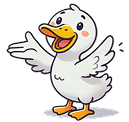{{ creator.is_followed ? 'notification-cancel' : 'notification-receive' | translate }}
{{ data.story.like_count | numbro:2 }}
{{ data.story.view_count | numbro:2 }}
{{ 'age-verification-required' | translate }}
{{ 'age-verification-required-desc' | translate }}
{{ 'private-character-title' | translate }}
{{ 'private-character-desc' | translate }}
{{ 'restricted-character-title' | translate }}
{{ 'restricted-character-desc' | translate }}
{{ data | details_translated : 'char_name' }}
{{ creator.is_followed ? 'notification-cancel' : 'notification-receive' |
translate }}
{{ 'char-info-world' | translate }}
{{ 'char-info-persona' | translate }}
{{ 'char-info-creator-comment' | translate }}
{{'char-related-characters-title'|translate}}
{{ 'public_at' | translate }} {{story.public_at | date:'yyyy-MM-dd'}} |
{{ 'updated_at' | translate }} {{story.updated_at | date:'yyyy-MM-dd'}}{{'empty-episode'|translate}}
{{'empty-episode-message'|translate}}
-
{{'free'|translate}}
{{episode.released_at | date:'yyyy.MM.dd'}}
{{episode.details.total_pages || 0}}pages
{{ 'modal-user-info-title' | translate }}
{{ 'modal-user-info-content' | translate }}


